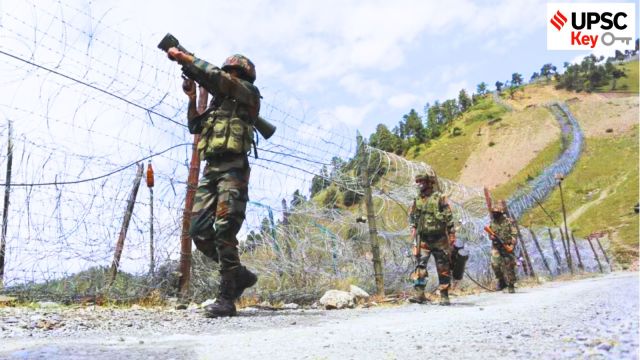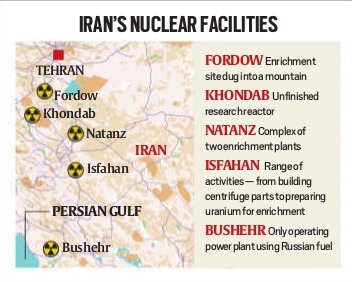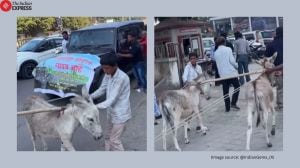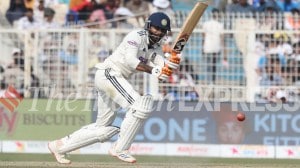
Preliminary Examination: Economic and Social Development-Sustainable Development, Poverty, Inclusion, Demographics, Social Sector Initiatives, etc.
Story continues below this ad
Main Examination: General Studies II: Welfare schemes for vulnerable sections of the population by the Centre and States and the performance of these schemes; mechanisms, laws, institutions and Bodies constituted for the protection and betterment of these vulnerable sections.
What’s the ongoing story: Will Other Backward Classes (OBCs) be counted as per the Central or state lists? Should every caste group — even those in the general category — be counted separately? These are the key questions before the government as it moves to operationalise its decision to include caste in the next Census, former officers involved with the Census exercise tell The Indian Express. The final decisions on these challenges, they add, will be “political calls”.
Key Points to Ponder:
• What is the census and its significance?
• History of census in India: Know in detail
• What kind of caste data is published in the Census?
• What is caste census?
• What is the objective of caste census?
• What is the significance of caste census? How caste census will ensure social justice?
Story continues below this ad
• What is the difference between caste census and socio economic caste census?
• Has a caste census ever been conducted?
• What are the advantages and disadvantages of caste census?
Key Takeaways:
• Unlike the Scheduled Castes (SCs) and Scheduled Tribes (STs), who are enumerated based on official lists notified under constitutional orders of 1950, there is no unified or single list for OBCs. The SC or ST lists, which currently include 1,170 SC castes and 890 ST communities, are periodically updated through parliamentary amendments.
• In the case of the OBCs, two separate lists are maintained. The National Commission for Backward Classes has a Central list that is used for reservations in Central government jobs and educational institutions. Simultaneously, each state maintains its own OBC list that differs from — and is often more extensive than — the Central list.
• The government now faces a critical choice: whether to limit OBC enumeration to the Central list of 2,650 communities or to expand the exercise by incorporating the various state lists — a decision that is as politically sensitive as it is administratively complex.
Story continues below this ad
• The second key question is whether caste enumeration should cover all castes, including those in the “general category”. Currently, during the Census, SC and ST respondents specify their particular caste or tribe, which enumerators then match against pre-approved lists. However, the general category is enumerated as one single bloc.
• The recent caste surveys done by Bihar and Telangana counted individual caste groups under the general category. The last Census exercise was conducted in 2011. Sources in the Registrar General and Census Commissioner’s office say the census process is expected to mirror the preparation undertaken for the 2020 Census, which was eventually suspended due to the Covid-19 pandemic.
• By conservative estimates, the government will need at least six months of preparation before it can begin enumeration.
• The first step is to issue a notification in the Official Gazette declaring its intent to conduct the Census. This must then be followed by similar notifications from all state governments — a process that could take up to two months. Once these are in place, the proforma for the house listing and population enumeration phases will have to be formally notified.
Story continues below this ad
• The suspended 2021 Census was set to be the first to use digital enumeration, with officials collecting data via electronic forms rather than pen and paper. With the inclusion of caste as one of the columns, the software will now need to be updated to include a new field for OBCs, along with a drop-down menu of sub-categories.
From The Ideas Page “The Telangana tutorial”
• Praveen Chakravarty writes- “On April 30, the Modi government did a somersault and announced its intent to conduct a caste census by enumerating caste in the next Census exercise but didn’t specify timelines, process — the when and how of it.”
• “Contrary to popular belief, a caste census is not just an enumeration of the population by various caste groups. It is a detailed and scientific exercise to collect various information to glean a holistic picture of the living conditions of people. The design of the questionnaire is the most critical aspect of this exercise, but the social, geographical and cultural diversity of India make it a very complex and challenging task.”
• “There is also a temptation to conflate caste census with reservation. Reservation is a policy tool to help oppressed groups overcome the handicap of lack of social networks and adequate representation. Caste census is a scientific empirical exercise. The two are not the same. The Supreme Court in several judgments has ruled that the mere definition of a caste as backward is not enough to justify further caste-based policies. The SC has consistently held that if rigorous data, empirical evidence and analysis done by experts show extreme backwardness of certain caste groups, then such caste legislation is justifiable.”
Do You Know:
Story continues below this ad
• Every Census in independent India from 1951 to 2011 has published data on Scheduled Castes and Scheduled Tribes, but not on other castes. Before that, every Census until 1931 had data on caste.
• However, in 1941, caste-based data was collected but not published. M W M Yeats, the then Census Commissioner, said in a note: “There would have been no all India caste table… The time is past for this enormous and costly table as part of the central undertaking…” This was during World War II.
• In the absence of such a Census, there is no proper estimate for the population of Other Backward Classes (OBCs), various groups within the OBCs, and others. The Mandal Commission estimated the OBC population at 52%, some other estimates have been based on National Sample Survey data, and political parties make their own estimates in states and Lok Sabha and Assembly seats during elections.
• The demand for a caste Census comes up before almost every Census, as records of debates and questions raised in Parliament show. It usually comes from among those belonging to OBCs and other deprived sections.
Other Important Articles Covering the same topic:
Story continues below this ad
📍Explained: Demands for a caste census, and what happens now after its approval
📍Cabinet approves caste Census: The debate, and the government’s stand over the years
📍A look at the complicated history of caste census
Previous year and UPSC Prelims Practice Question Covering similar theme:
(1) Consider the following statements: (UPSC CSE, 2009)
1. Between Census 1951 and Census 2001, the density of the population of India has increased more than three times.
Story continues below this ad
2. Between Census 1951 and Census 2001, the annual growth rate (exponential) of the population of India has doubled.
Which of the statements given above is/are correct?
(a) 1 only
(b) 2 only
(c) Both 1 and 2
(d) Neither 1 nor 2
(2) Which of the following articles of the Constitution of India provides for promotion of educational and economic interests of Scheduled Castes, Scheduled Tribes and other weaker sections?
(a) Article 45
(b) Article 47
(c) Article 48
(d) Article 46
EXPLAINED
Syllabus:
Preliminary Examination: Current events of national and international importance.
Main Examination: General Studies-II, III: India and its neighbourhood- relations. Bilateral, regional and global groupings and agreements involving India and/or affecting India’s interests. Role of external state and non-state actors in creating challenges to internal security. Security challenges and their management .
Story continues below this ad
What’s the ongoing story: Pakistani troops violated the ceasefire along several sectors at the Line of Control (LoC) and International Border for the eighth consecutive night on Thursday. The Indian Army has responded to each of these violations in a “calibrated and proportionate manner”.
Key Points to Ponder:
• What is the Simla Agreement? Does it mention a dispute resolution process?
• What is Line of Control (LoC)?
• What is the history of India-Pakistan relations?
• What are the areas of conflict between both the countries?
• What are the security challenges faced by India on the LoC?
• What is the ceasefire agreement between India and Pakistan?
• How did the India-Pakistan ceasefire originate and evolve?
• What do violations of ceasefire in times of crises indicate?
Key Takeaways:
• The violations by Pakistan, which began after the April 22 terrorist attack in Pahalgam in which 26 civilians were killed, and the Indian response, have not caused any deaths on either side thus far.
• But the violations represent the most intensive breakdown of the ceasefire since the Indian and Pakistani Directorates General of Military Operations (DGMOs) renewed it through a joint statement in February 2021.
• The India-Pakistan ceasefire, as it stands today, is less of an agreement and more of an understanding. A ceasefire between two conventional militaries is usually established after the cessation of war hostilities, along a line on the ground on the two sides of which each force has established its effective control.
• In the case of India and Pakistan, such a ceasefire was last established in December 1971. The line for this was largely the same as the “Ceasefire Line” that was established by the Karachi Agreement (1949) after the 1948-49 war.
• The Simla Agreement (1972) re-characterised this line as the “Line of Control”, a military border without “prejudice to the recognised position of either side” – which means this is not a legally recognised international border but a holding line for both militaries.
• The LoC runs for approximately 740 km from near Sangam in Kashmir to Point NJ-9842 near the Siachen Glacier. In Jammu, the line changes into the International Border (IB) for India, since it has no territorial claims on Pakistani Punjab on the other side. But for Pakistan, the IB is a “Working Boundary”, since it claims Jammu on the Indian side – and hence deems the border unsettled.
• Over the decades, the LoC has acted as the de facto border between India and Pakistan. Given the background and military character of the LoC, on-ground positions on either side have been defended mostly by the two armies (unlike the IB which is managed solely by India’s Border Security Force and the Pakistani Rangers) with extensive defensive structures and large numbers of troops.
• The soldiers on each side are mandated to ensure that the other side does not attempt “unilateral changes” to the LoC (which otherwise shifts quite literally as the snow melts or accumulates seasonally in Kashmir), and to prevent unauthorised infiltration – of both soldiers and civilians such as shepherds, etc.
• The high number of soldiers from two nuclear armed countries with a history of wars positioned eyeball-to-eyeball across each other makes the LoC perpetually prone to tensions.
• Cross-border firing, along with the infiltration of Pakistan-sponsored terrorists, especially since the beginning of the insurgency in Kashmir in 1989, or raids by Pakistani “Border Action Teams” has meant that the ceasefire “agreement” does not really exist. Technically, it lapsed when the first exchange of fire happened after 1972.
• Since then, whenever cross-border firing stops after a few exchanges, the two sides reach an “understanding” to return to the ceasefire.
• There is, however, a body of unwritten standard operating procedures and mechanisms to resolve differences. These include “flag meetings” between local commanders, as well as hotlines such as that between the two Directorates General of Military Operations in New Delhi and Rawalpindi.
• However, these do not – and are not intended to – ensure that future violations do not occur. The LoC, then, is a peculiar border where violence is normal, and mutually controlled through communication mechanisms.
Do You Know:
• In 2021, both militaries had an incentive to cease violations across the LoC and reach yet another “understanding”, invoking the 2003 understanding before the India-Pakistan Composite Dialogue.
• The Pakistan Army was facing new internal threats and a freshly destabilised border with Afghanistan. For the Indian Army, the ceasefire provided a chance to focus better on the threat from China at the Line of Actual Control (LAC) in Ladakh.
• Both India and Pakistan have incentives to continue this understanding. Indeed, since 2019, when the two countries snapped diplomatic and economic ties, formal channels of bilateral communication have been active only at the military level.
Other Important Articles Covering the same topic:
📍LoC heats up after Pahalgam attack: DGMOs hold hotline talks, Army warns Pakistan over ceasefire breach
Previous year Prelims Question Covering similar theme:
(3) Arrange the following agreements between India and Pakistan in chronological order:
1. Tashkent Declaration
2. Indus Water Treaty
3. Agreement on the Prohibition of Attack Against Each Other’s Nuclear Installations and Facilities
4. Agreement on Reducing the Risk from Accidents Relating to Nuclear Weapons
Select the correct answer using the code given below: (UPSC-CDS (II) – 2024)
(a) 1, 2, 3, 4
(b) 2, 3, 4, 1
(c) 2, 1, 3, 4
(d) 1, 4, 2, 3
The water sharing dispute between Punjab and Haryana
Syllabus:
Preliminary Examination: Indian Polity and Governance-Constitution, Political System, Panchayati Raj, Public Policy, Rights Issues, etc.
Mains Examination: General Studies II: Functions and responsibilities of the Union and the States, issues and challenges pertaining to the federal structure, devolution of powers and finances up to local levels and challenges therein.
What’s the ongoing story: Amid escalating tensions with Haryana over water sharing, all parties in Punjab came together on Friday to reject the Bhakra Beas Management Boards’s (BBMB’s) decision to release an extra 4,500 cusecs of water to Haryana.
Key Points to Ponder:
• Read about the Bhakra-Nangal project.
(Thought Process: Read about the Bhakra-Nangal project’s objectives and evolution, and evaluate its current relevance amid inter-state tensions.)
• What is Bhakra Beas Management Board (BBMB)?
• Why was BBMB formed?
• What challenges does the BBMB face in ensuring cooperative federalism in water distribution?
• What is the Beas Project?
• What does the Indian Constitution say about the water?
• What are the Inter-State water disputes in India?
• What are the Constitutional Provisions for interstate water disputes?
• What Article 262 of the Constitution says about interstate water disputes?
Key Takeaways:
• The latest stand-off began on April 23, when Haryana sought 8,500 cusecs of water from the Bhakra-Nangal project — 4,500 cusecs more than what it is currently receiving. Punjab CM Mann refused, putting the ball in the court of the BBMP.
• In a marathon BBMP meeting chaired by chairman Manoj Tripathi on Wednesday, three of BBMP’s member states — the BJP-ruled Haryana, Rajasthan, and Delhi — voted in favour of releasing extra water to Haryana, effectively bypassing Punjab’s opposition.
• Punjab has, however, refused to open additional sluice gates at the Nangal dam which would release this extra water to Haryana. As a result, the Haryana government on Friday said it will move the Supreme Court to secure its fair allocation.
• Conceived as early as the 1910s, the Bhakra-Nangal project is among the earliest post-Independence river valley development projects, one that Prime Minister Jawaharlal Nehru himself took a personal interest in.
• It comprises two separate but complementary dams on the River Satluj: the Bhakra dam in Himachal Pradesh, and the Nangal dam, some 10 km downstream, in Punjab.
• Before the state was split into Punjab, Haryana, and Himachal Pradesh, the Bhakra-Nangal project was under the direct control of the Punjab government. The Bhakra Management Board was established in 1966, under Section 79 of the Punjab Reorganisation Act, to administer the project in the best interests of all three states.
• This board was renamed BBMP in 1976, and given the additional task of managing projects on the River Beas, namely the Beas-Satluj Link Project (Pandoh dam), and Pong dam, both in Himachal.
• The BBMP today plays a central role in the distribution of water between Punjab, Haryana, Rajasthan, Himachal Pradesh, and Delhi. At the start of every accounting year (roughly September-August, depending on the monsoon), the BBMP determines how much water would be allocated to each state.
• For the current year, it allocated 5.512 million acre-feet (MAF) to Punjab, 2.987 MAF to Haryana, and 3.318 MAF to Rajasthan.
• Punjab claims that Haryana has already withdrawn 3.110 MAF — or 104% of its share for the whole year. Haryana said it desperately needs more water for drinking purposes, especially in the water-starved districts of Hisar, Sirsa, and Fatehabad.
• In the immediate term, the states have no option but to find common ground, noted water expert A S Dulet told The Indian Express.
Do You Know:
• Article 262 of Indian Constitution talks about the ‘Adjudication of disputes relating to waters of inter-State rivers or river valleys.’ It provides, clause (1) Parliament may by law provide for the adjudication of any dispute or complaint with respect to the use, distribution or control of the waters of, or in, any inter-State river or river valley. clause (2) Notwithstanding anything in this Constitution, Parliament may by law provide that neither the Supreme Court nor any other court shall exercise jurisdiction in respect of any such dispute or complaint as is referred to in clause (1). Using the powers given by this article, Parliament enacted the Inter-State River Water Disputes Act, 1956, to deal with disputes.
Other Important Articles Covering the same topic:
📍Explained: Why rule change in BBMB has become a flashpoint between Centre and Punjab
Previous year UPSC mains Question Covering similar theme:
Constitutional mechanisms to resolve the inter-state water disputes have failed to address and solve the problems. Is the failure due to structural or process inadequacy or both? Discuss. (UPSC CSE 2013)
As Trump invokes Bagram, story of the strategic air base in Afghanistan
Syllabus:
Preliminary Examination: Current events of national and international importance
Mains Examination: General Studies-II: Effect of policies and politics of developed and developing countries on India’s interests.
What’s the ongoing story: US President Donald Trump on Thursday claimed that China now occupies the Bagram Airfield, which American forces had vacated weeks before pulling out from Afghanistan in 2021.
Key Points to Ponder:
• Read about the Bagram Airfield.
• What is the strategic significance of Bagram Airfield in Afghanistan’s military and geopolitical history?
• Read about the Cold War.
• What were the implications of the US withdrawal from Bagram Airfield on the regional power dynamics in Central and South Asia?
• What was the 2020 US-Taliban agreement?
• How has China’s relationship with the Taliban evolved following the US withdrawal from Afghanistan?
• How is China’s evolving relationship with the Taliban a matter of concern for India?
• How has India navigated its relationship with the Taliban since they took power?
• Afghanistan’s geopolitical significance extends far beyond India and Pakistan. Elaborate.
• Map work: Location of Afghanistan.(Refer Atlas)
Key Takeaways:
• Trump claimed that the Americans were going to “keep” Bagram which is “an hour away from where China makes its nuclear weapons”. But “they (presumably the Joe Biden-administration) gave Bagram up, and right now, China occupies Bagram,” he said.
• It is unclear which Chinese nuclear facility Trump was referring to. The closest known testing site is 2,000 km away at Lop Nur in Xinjiang, where China tested its first atom bomb in 1964. The closest nuclear weapons facility is the Koko Nur complex, further east in the Qinghai province.
• Bagram Airfield, the largest air base in Afghanistan, lies some 60 km to the north of Kabul, in the strategic Parwan province.
• Experts say that in Parwan lie the keys to controlling much of Afghanistan. The 2.6 km-long Salang tunnel here connects Kabul to Mazar-e-Sharif and other cities in the north, while highways provide linkages to Ghazni and Kandahar in the south, and Bamiyan to its west.
• The air base was originally built by the Soviets in the 1950s, during the early days of the Cold War, when both the US and the USSR were jockeying for influence in Afghanistan. In 1959, for his landmark visit to the country, then US President Dwight Eisenhower landed in Bagram.
• During the Soviet-Afghan War from 1979-89, Bagram became a vital Soviet base. Troops from airborne divisions were deployed from Bagram, and Sukhoi Su-25s flew daily missions against mujahideen in the mountains from the base. The base was fortified, and began housing military personnel.
• After the Soviet withdrawal, in the 1990s, the abandoned Bagram base became a frontline in a war between the Taliban, who held Kabul to the south, and the Northern Alliance fighters based in mountain gorges to its north. The airbase was heavily damaged as a result.
• After the September 11, 2001 attacks, the US and its allies took over the Bagram Airfield. Over the next two decades, as the “War on Terror” raged on, Bagram became the epicentre of the American presence in Afghanistan.
• The previous Trump administration in 2020 signed a deal with the Taliban, which provided for a pullout of all NATO troops from Afghanistan soil. US forces had vacated Bagram on July 2, 2021; the base fell to the Taliban on August 15.
• The base is under Taliban control today. That said, the US has long been concerned over China making inroads into Afghanistan after its exit. Even as most countries have been wary of fully engaging with the Taliban, China gave the Taliban representative in Beijing ambassador credentials last year.
Do You Know:
• Afghanistan’s geopolitical significance extends far beyond India and Pakistan. It is a multi-ethnic, landlocked country that has been at the centre of global politics primarily because of its location — its proximity to Central Asia, the Middle East and South Asia. Its unique location has always attracted the interest of major global as well as regional powers.
Other Important Articles Covering the same topic:
📍Donald Trump: Right now, China occupies Bagram air base in Afghanistan
📍UPSC Issue at a Glance | India-Taliban Talks: Key Questions You Must Know for Prelims and Mains
Previous year UPSC Prelims Question Covering similar theme:
(4) Consider the following countries: (UPSC CSE 2022)
1. Azerbaijan
2. Kyrgyzstan
3. Tajikistan
4. Turkmenistan
5. Uzbekistan
Which of the above have borders with Afghanistan?
(a) 1, 2 and 5 only
(b) 1, 2, 3 and 4 only
(c) 3, 4 and 5 only
(d) 1, 2, 3, 4 and 5
THE EDITORIAL PAGE
Framing the reply
Syllabus:
Preliminary Examination: Current events of national and international importance.
Main Examination: General Studies-II, III: India and its neighbourhood- relations. Bilateral, regional and global groupings and agreements involving India and/or affecting India’s interests. Role of external state and non-state actors in creating challenges to internal security. Security challenges and their management .
What’s the ongoing story: THAT the use of force by a sovereign can never be separated from the realm of politics is an insight India can’t ignore as public emotion runs high in demanding retribution for the horrific Pahalgam terror attack.
Key Points to Ponder:
• Read about the 2025 Pahalgam terror attack.
• What is the 5-Point Action Plan Announced by India After the Pahalgam Terror Attack?
• What are the immediate diplomatic actions India took following the Pahalgam terror attack?
• What is the history of India-Pakistan ties?
• Read about the Indus Waters Treaty (IWT) and Simla Agreement.
• What is the Vienna Convention on Diplomatic Relations?
• How can India effectively use its global partnerships and public diplomacy to address the challenges posed by Pakistan?
• What measures has India taken to address the challenge of terrorism?
• Compare and contrast the defense capabilities of India and Pakistan in 2025.
• Map work: Indian states Bordering Pakistan (Refer Atlas)
Key Takeaways:
• Even as the government weighs the options, Prime Minister Narendra Modi has reportedly said that the armed forces have operational freedom to decide on the mode, targets and timing of India’s response.
• India’s own military response must necessarily be shaped by political judgement and diplomatic strategy. Three political challenges for Indian diplomacy stand out.
• First is the immediate imperative of convincing the world that India is charging Pakistan with complicity in the Pahalgam attack based on facts. While much of the world has expressed shock and sorrow at the Pahalgam strike, not all of them automatically accept that Pakistan is involved.
• The Ministry of External Affairs is rightly reaching out to all major countries in the world, including the permanent and non-permanent members of the United Nations Security Council, explaining India’s compelling case and offering evidence of Pakistan’s involvement.
• Second, as India gets closer to the use of force, there are a growing number of countries calling for restraint.The challenge for Indian diplomacy is to separate the formal and performative calls for restraint from the careful assessment of the political time and space that India has in pursuing the military option against Pakistan. Contrary to popular perception, the Pakistan army is no pushover and there should be no expectation that India will have a clean win in any military exchange. Ensuring international support during the testy period of military exchanges is critical.
• Third is management of the inevitable international diplomatic intervention, given concerns about nuclear escalation, by the major powers as well as the UNSC in favour of de-escalation and finding the political off-ramp for the termination of the conflict. Indian diplomacy has a key role in ensuring that Delhi comes out on top — politically — at the end of this bout with Pakistan.
Do You Know:
From “The opening salvo” in The Editorial Page
• Tilak Devasher writes-“In its initial retribution, India chose the non-kinetic route, throwing Pakistan off balance. By holding the 1960 Indus Waters Treaty (IWT) in abeyance, India has underlined that the sanctity of treaties and Pakistan’s continuing sponsorship of terrorism cannot go together.”
• “Together with several diplomatic measures such as withholding visas, India has redefined the rules of engagement with a terror-sponsoring Pakistan. This is only the starting point…In the meantime, the non-kinetic measures are only India’s opening salvo.”
• “The IWT had divided the six rivers of the Indus basin between the two countries. India received the three eastern rivers (the Ravi, Beas, and Sutlej). Pakistan received the three western rivers (the Indus, Jhelum, and Chenab) that accounted for almost 80 per cent of the shared basin’s water. However, India can use these western rivers for “non-consumptive” purposes like irrigation, hydro-power and navigation.”
Other Important Articles Covering the same topic:
📍Knowledge Nugget | What should you know about the Pahalgam terror attack and the Indus Waters Treaty of 1960 for the UPSC Exam?
📍Knowledge Nugget: How is Vienna Convention on Diplomatic Relations relevant for UPSC Exam?
Previous year UPSC Prelims Question Covering similar theme:
(5) With reference to the Indus river system, of the following four rivers, three of them pour into one of them which joins the Indus directly. Among the following, which one is such a river that joins the Indus direct? (UPSC CSE 2021)
(a) Chenab
(b) Jhelum
(c) Ravi
(d) Sutlej
Previous year UPSC Main Question Covering similar theme:
Terrorist activities and mutual distrust have clouded India – Pakistan relations. To what extent the use of soft power like sports and cultural exchanges could help generate goodwill between the two countries? Discuss with suitable examples. ( UPSC CSE 2015)
The scourge of terrorism is a grave challenge to national security. What solutions do you suggest to curb this growing menace? What are the major sources of terrorist funding? (UPSC CSE 2017)
ECONOMY
US-China tariff talks could have implications for India
Syllabus:
Preliminary Examination: Current events of national and international importance, Economic Development
Main Examination: General Studies II: Effect of policies and politics of developed and developing countries on India’s interests.
What’s the ongoing story: Amid seemingly worsening trade ties between the US and China, which has raised hopes of more US-bound orders shifting to India, China’s Ministry of Commerce said Friday that it is “evaluating” the possibility of initiating tariff negotiations with the US.
Key Points to Ponder:
• Read about the recent development associated with Trump’s announcement of reciprocal tariff and its 90 days pause.
• US-China tariff war— Know in detail.
• What are tariffs? Why are tariffs imposed?
• How are tariffs retaliated? How is China responding to Trump’s retaliatory tariffs?
• What can be the implications of protectionist trade policies on India?
• What are India’s major exports to the U.S. and China?
• What India imports from the US and China?
• What can be the implications of a potential US–China trade deal on India’s economic interests?
• What strategies India is using to navigate potential trade negotiations with the U.S.?
• Read about the bilateral trade agreement between India and the USA?
Key Takeaways:
• This comes as Indian exporters have started receiving more orders and inquiries from US clients, amid elevated tariffs on Chinese goods. Exporters told The Indian Express that the availability of shipping containers — which had been a constraint — is beginning to improve due to the cancellation of several Chinese shipments to the US. However, any return to normalcy between the US and China could slow the shift in business towards India.
• The biggest shift so far has been observed in the electronics sector. Apple CEO Tim Cook said that a majority of iPhones sold in the US during the June quarter will be exported from India. However, he added that he could not offer a longer-term outlook due to the evolving trade war between the US and China, where Apple currently manufactures most of its products.
• Notably, US President Donald Trump had signed a two-phased deal with China during his first term, which included broader market access for US agricultural goods. Trump had also been negotiating with several countries — including India — after threatening to raise tariffs.
• In its statement, China said that the tariff and trade wars were unilaterally initiated by the United States. If the US genuinely wants talks, it should show sincerity by cancelling its unilateral tariff hikes.
• The possibility of an eventual US-China deal also gathers as US Treasury Secretary Scott Bessent said last month that the current tariff standoff with China is unsustainable and that he expects a “de-escalation” in the trade war between the world’s two largest economies, according to the Associated Press.
• A potential US–China trade deal could quickly help Chinese exporters regain ground, due to the superior technical expertise China has built over the years. Indian manufacturers say India is currently not in a position to meet US demand in several labour-intensive sectors such as non-leather footwear.
• A US–China trade deal may not be in India’s interest, as emerging market economies like India stand to gain from the disruption caused by the trade conflict.
Do You Know:
• Trump initially imposed a 34 per cent tariff on Chinese goods, which was swiftly met with an equivalent retaliatory measure by Beijing. In response, the US added another 50 per cent in duties. When combined with earlier levies from February and March, the total tariff burden on Chinese imports under Trump’s second term increased to 104%, bringing fears of a near-embargo scenario.
• But amid global pushback, US President Donald Trump announced a 90-day pause on tariffs, however, China is excluded from the pause, and instead, the tariff rate has been increased to 125%.
• Beijing imposed 125 per cent tariffs on US goods from April 12, up from the 84 per cent previously announced, news agency Reuters quoted the Chinese finance ministry said on Friday. This comes after the Trump administration decided to pause tariffs for 90 days on many countries, but hit China with a 145 percent tariff amid the ongoing trade wars.
• But on April 22, the President said the current 145% tariff rate on China was “very high and it won’t be that high” over time. A day later, Treasury Secretary Scott Bessent said there was “an opportunity for a big deal” between the two countries – but added that the US would not unilaterally reduce all tariffs on China.
• China, which was America’s second-largest source of imports last year, shipped $439 billion worth of goods to the US, compared to $144 billion in American exports to China. The rising tariffs now threaten to hit domestic industries hard, with businesses warning of cost surges, layoffs, and reduced competitiveness.
Other Important Articles Covering the same topic:
📍UPSC Issue at a Glance | From Trump’s reciprocal tariffs announcement to 90-day pause: Everything in between
📍UPSC Issue at a Glance | Tariff war: 4 Key Questions You Must Know for Prelims and Mains
📍Between Scylla and Charybdis
Previous year UPSC Mains Question Covering similar theme:
What are the key areas of reform if the WTO has to survive in the present context of ‘Trade War’, especially keeping in mind the interest of India? (UPSC CSE 2018)
Subscribe to our UPSC newsletter. Stay updated with the latest UPSC articles by joining our Telegram channel – Indian Express UPSC Hub, and follow us on Instagram and X.
🚨 Click Here to read the UPSC Essentials magazine for April 2025. Share your views and suggestions in the comment box or at Manas Srivastava 🚨



































